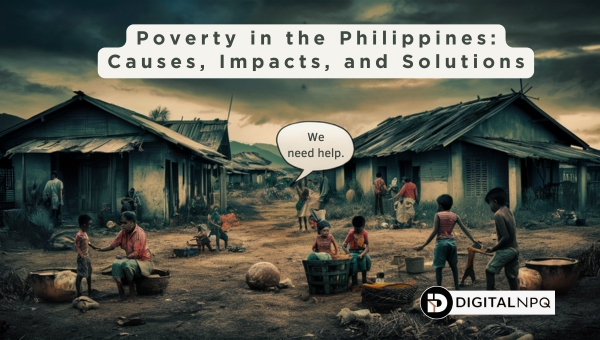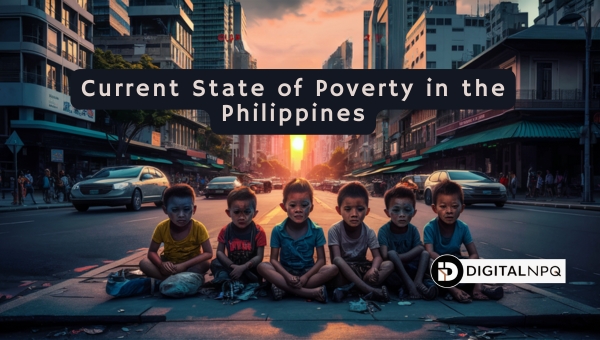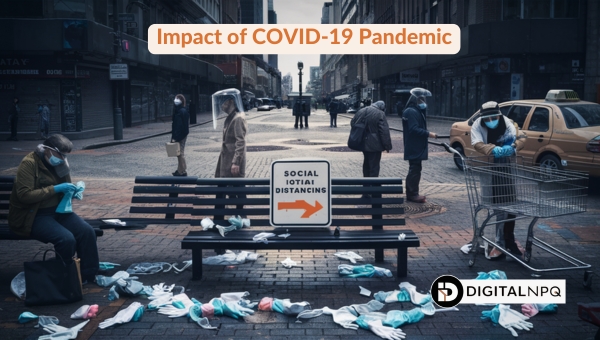Poverty in the Philippines: Causes, Impacts, and Solutions

Demystifying the complexities of poverty in the Philippines can be challenging, but understanding its root causes and current state is crucial. In this article, we’ll delve into the historical factors that shaped today’s economic landscape, examine the impact of the COVID-19 pandemic, and explore various efforts and initiatives aimed at alleviating poverty.
We’ll also discuss pathways for future poverty reduction and the challenges that lie ahead. By the end, you’ll have a comprehensive understanding of the multifaceted issue of poverty in the Philippines and the steps needed to create lasting change.
Current State of Poverty in the Philippines
Understanding the current state of poverty in the Philippines requires a look at various indicators. The statistics provide a comprehensive picture of how income levels, employment rates, and access to essential services impact the population.

Key Indicators and Statistics
Several key indicators highlight the poverty levels in the Philippines:
- Poverty Rate: As of 2023, the poverty rate stands at 15.5%, which translates to approximately 17.54 million Filipinos living below the poverty line. This is a significant improvement from previous decades, yet challenges remain.
- Income Levels: The poverty threshold is set at PHP 12,030 per month for a family of five, equating to around PHP 79 per person per day. This amount covers basic food and non-food necessities.
- Employment Rates: Employment rates have fluctuated, especially due to the COVID-19 pandemic, which pushed an estimated 2.3 million people into poverty between 2018 and 2021.
- Regional Disparities: The Bangsamoro Autonomous Region in Muslim Mindanao has the highest poverty incidence at 37.2%, while Metro Manila has the lowest at 3.5%.
- Children in Poverty: Over 32 million children live in poverty, with 5 million experiencing extreme poverty conditions.
These statistics underscore the multifaceted nature of poverty in the Philippines, affecting various population segments and regions differently.
Historical Factors and Drivers
Understanding the historical factors and drivers behind poverty in the Philippines is crucial. These factors have long-lasting impacts and continue to shape the economic landscape today. Let’s delve into the colonial influences and the economic policies that have contributed to social inequalities.
Colonial Influence
Colonial history has left a lasting mark on the Philippines, significantly impacting its economic structures. Here’s how:
- Land Ownership Patterns: During Spanish colonization, large tracts of land were owned by a few elites. This system created a wide gap between the rich and the poor.
- Economic Systems: The Spanish and American colonial periods introduced economic systems that favored the elite, marginalizing the majority.
- Resource Allocation: Colonial rulers prioritized resource allocation to benefit their interests, leaving local populations with limited access to essential resources.
These historical elements have embedded social hierarchies that remain evident today, contributing to persistent poverty.
Economic Policies and Inequality
Post-colonial economic policies have also played a significant role in shaping social inequalities. Here are some key points:
- Urban vs. Rural Development: Policies have historically favored urban development over rural areas, leading to uneven growth.
- Wealth Concentration: A significant portion of wealth is concentrated among the top earners. The top 1% captures a large share of national income, highlighting systemic issues.
- Neglected Sectors: Rural development and education access have often been overlooked, trapping many communities in poverty.
- Policy Implementation: Ineffective implementation of poverty alleviation programs has further widened the gap between different social groups.
These factors illustrate how historical economic policies have led to long-term social inequalities, perpetuating poverty in various regions of the Philippines.
Also Read: Maximum Salary for Social Security: What You Need to Know
Impact of COVID-19 Pandemic
The COVID-19 pandemic has profoundly affected the landscape of poverty in the Philippines. From immediate economic downturns to long-term socio-economic impacts, the pandemic has exacerbated vulnerabilities and widened existing disparities. Let’s delve into these aspects further.

Socioeconomic Consequences
The immediate aftermath of COVID-19 saw a sharp rise in unemployment and food insecurity. Vulnerable populations, especially those in rural areas, felt the brunt of these changes. Key impacts include:
- Unemployment Surge: Many lost their jobs due to lockdowns and business closures, pushing families further into poverty.
- Food Insecurity: Over 61% of households experienced moderate to severe food insecurity during the lockdown periods.
- Health Disparities: Access to healthcare became more challenging, affecting the ability of vulnerable groups to manage both COVID-19 and pre-existing conditions.
Government and NGO Responses
Both the government and non-governmental organizations (NGOs) have played critical roles in mitigating the pandemic’s effects on poverty. Their efforts have included a range of initiatives aimed at providing immediate relief and fostering long-term resilience.
- Government Initiatives
- Cash Transfers: Programs like the Social Amelioration Program provide financial aid to low-income families.
- Food Assistance: Distribution of food packs to affected communities helped alleviate immediate hunger.
- NGO Contributions
- Community-Led Programs: NGOs implemented initiatives such as low-interest rice loans to support food security.
- Health and Education Support: Organizations provide health services and educational materials to maintain continuity in essential services.
The combined efforts of these entities have been vital in providing relief and working towards sustainable solutions for poverty alleviation during and after the pandemic.
Efforts and Initiatives
Efforts to reduce poverty in the Philippines involve multiple actors, including the government, non-governmental organizations (NGOs), and local communities. These initiatives are crucial in providing support and resources to those in need. Let’s explore some of the significant programs and contributions aimed at alleviating poverty.
Government Programs
The government has implemented several programs to combat poverty and provide social welfare. These initiatives focus on various aspects such as financial support, education, and healthcare.
- Pantawid Pamilyang Pilipino Program (4Ps): This is a conditional cash transfer program that provides financial assistance to low-income families, encouraging them to keep their children in school and ensure regular health check-ups.
- Philippine Health Insurance Corporation (PhilHealth): Aims to provide universal health coverage, helping impoverished families access essential healthcare services.
- KALAHI-CIDSS (Kapit-Bisig Laban sa Kahirapan-Comprehensive and Integrated Delivery of Social Services): Focuses on community-driven development projects to improve local infrastructure and services.
Nongovernmental Contributions
NGOs and private sectors play a pivotal role in addressing gaps that government programs may not fully cover. Their contributions are essential in providing tailored solutions to specific needs within communities.
- Outreach International: Develop community-led programs to tackle food insecurity and promote sustainable livelihoods.
- Gawad Kalinga: Focuses on building homes and communities for the homeless, providing not only shelter but also a sense of community and belonging.
- Microfinance Institutions: Offer small loans and financial services to low-income individuals, empowering them to start small businesses and improve their economic status.
Community and Local Efforts
Grassroots-level initiatives are vital in addressing poverty at the local level. These efforts are often more adaptable and responsive to the unique challenges faced by specific communities.
- Barangay Development Councils: Local councils work on projects that directly benefit their communities, such as building local infrastructure or providing educational programs.
- Community-Based Organizations: Groups formed within communities that focus on specific issues like clean water access, educational support, or healthcare services.
- Local Cooperatives: These organizations help members pool resources to create economic opportunities, such as shared farming equipment or collective marketing efforts.
Efforts to reduce poverty in the Philippines are multifaceted and involve collaboration between various stakeholders. Government programs, NGOs, and community initiatives all play crucial roles in this ongoing challenge.
Also Read: Oregon Tax Refund Status: Simplified Guide to Your Refund
Pathways to Poverty Reduction
Reducing poverty in the Philippines requires a multifaceted approach. Let’s delve into the strategies that can make a significant impact. From economic development to social equity, these pathways offer hope for a brighter future.
Economic Development and Job Creation
Economic development and job creation are crucial in reducing poverty levels. Here are some strategies that can help:
- Promoting Small and Medium Enterprises (SMEs): Encouraging the growth of SMEs can create numerous job opportunities and stimulate local economies.
- Investing in Infrastructure: Building and improving infrastructure can attract investments and improve access to markets.
- Skills Training Programs: Providing vocational training and skill development programs can equip individuals with the tools they need to secure better-paying jobs.
Education and Healthcare
Education and healthcare are fundamental in breaking the cycle of poverty. Here’s how they contribute:
- Access to Quality Education: Ensuring that children receive a good education can open doors to better employment opportunities in the future.
- Healthcare Services: Access to affordable healthcare keeps families healthy and able to work, reducing the financial burden of medical expenses.
- Nutritional Programs: Implementing programs that address malnutrition can improve children’s learning capabilities and overall health.
Social and Gender Equity
Promoting social equity, including gender equality, is essential for effective poverty reduction. Consider these approaches:
- Empowering Women: Providing women with education and economic opportunities can significantly boost family incomes.
- Inclusive Policies: Developing policies that ensure equal opportunities for all, regardless of gender or socio-economic status.
- Community Involvement: Encouraging community participation in decision-making processes to address local needs effectively.
By focusing on these pathways, we can make strides in reducing poverty and improving the quality of life for many Filipinos.
Challenges and Future Directions
Poverty in the Philippines faces numerous challenges that make alleviation efforts complex. Understanding these hurdles is crucial for crafting effective solutions. Let’s delve into the economic and political obstacles, as well as the environmental and climate issues impacting poverty in the country.
Economic and Political Hurdles
Economic and political challenges significantly impact poverty reduction efforts in the Philippines. Here are some key points:
- Corruption: Corruption remains a major barrier, diverting resources away from essential services and infrastructure projects.
- Political Dynasties: Political dynasties control many local government units, often prioritizing their interests over public welfare.
- Ineffective Governance: Poor governance and administrative inefficiencies hamper the implementation of poverty alleviation programs.
- Inequitable Policies: Historical and ongoing economic policies often favor urban centers, leaving rural areas underdeveloped.
Environmental and Climate Issues
Environmental factors and climate change also play a critical role in perpetuating poverty in the Philippines. Key issues include:
- Natural Disasters: The Philippines is prone to natural disasters like typhoons, earthquakes, and floods, which disproportionately affect impoverished communities.
- Environmental Degradation: Deforestation, pollution, and poor waste management degrade natural resources, which many rural communities depend on for their livelihoods.
- Climate Change: Rising sea levels and unpredictable weather patterns threaten agricultural production, impacting food security and income for rural families.
- Lack of Resilience: Many impoverished communities lack the resources and infrastructure to recover from environmental shocks, making it harder to escape poverty.
Addressing these challenges requires a multifaceted approach, including better governance, equitable policies, and sustainable development practices.
FAQs
What is the current poverty rate in the Philippines?
As of 2023, the poverty rate in the Philippines is 15.5%, affecting around 17.54 million Filipinos.
How has the COVID-19 pandemic affected poverty in the Philippines?
The pandemic increased the poverty rate to 18.1% in 2020, pushing millions into poverty due to job losses and economic downturns.
What challenges hinder effective poverty reduction in the Philippines?
Corruption, political issues, and environmental challenges like natural disasters significantly hinder poverty alleviation efforts.
Conclusion
In summary, poverty in the Philippines is a complex issue influenced by historical, economic, and social factors. While there have been significant strides in poverty reduction, challenges such as the COVID-19 pandemic and environmental issues continue to impact vulnerable populations.
Various efforts by the government, NGOs, and communities are vital in addressing these challenges and creating sustainable solutions. To truly make a difference, ongoing commitment and comprehensive strategies are essential. If you found this article informative, explore more on our site for in-depth discussions on social issues and solutions. Stay informed and empowered!
